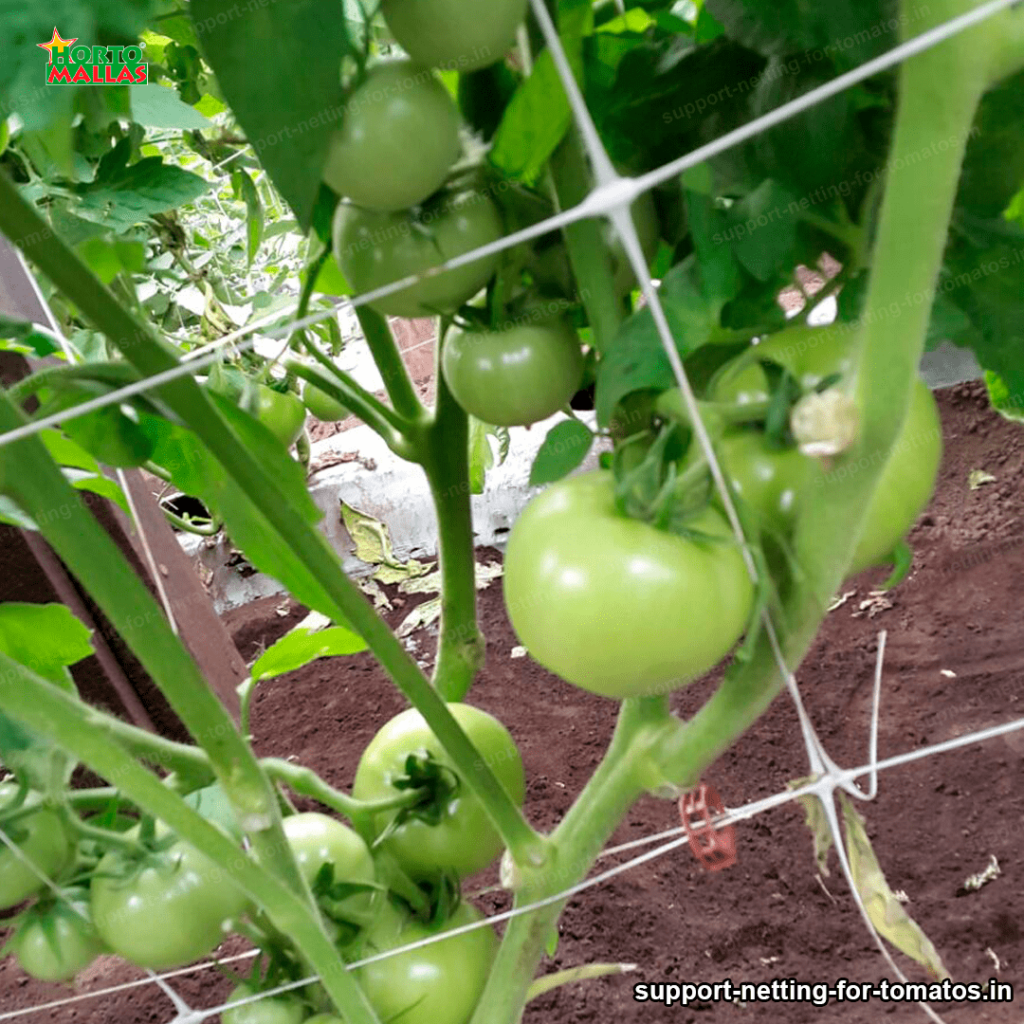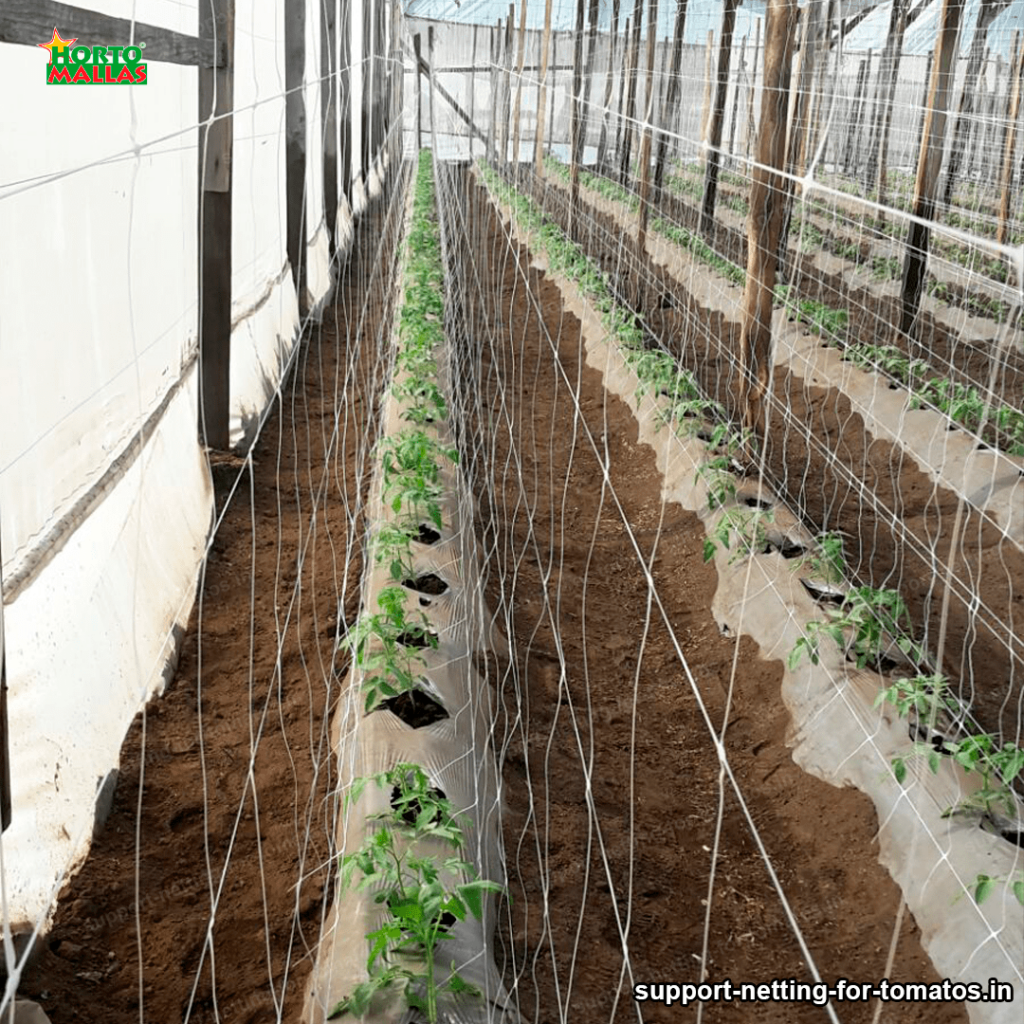Tomato trellising netting is probably a gardener’s best friend. This horticulture-related practice helps crops in many ways, protecting them from the elements and allowing fruit to grow and ripen more quickly.
Tomato netting is an essential material for the care of tomato plants. This is because with it we can establish a temporary resistance against the elements by wind or rain, thus preventing falls or early wear. Tomato netting also helps us to protect the plant as it grows, thus protecting the fruit from insects and/or pests, as well as from direct sunlight.
However, improper use of tomato netting can cause serious and irreparable damage to plants. One of the main ones is the damage it can cause to the development and growth of the fruit, blocking direct sunlight and the nutrients necessary for their development. On the other hand, the excessive use of tomato netting or the use of a very personalized one can block the air necessary for plant photosynthesis, also causing a decrease in the fruits produced in it.
The tomato netting fits around the stem and roots of the tomato plant, so in cases of misuse it causes a strangulation of the plant, thus preventing the absorption of nutrients. This also affects flowering, causing a decrease in the fruits produced. Another serious damage caused by the incorrect use of tomato netting is the dehydration of the plant. This causes inadequate flowering of the fruit, damaging fruit quality.
Failure to follow the guidelines for the use of tomato netting can cause serious damage to both the plant and the fruit, affecting the quality of the fruit for trade and consumption.

Therefore, it is important to carefully establish an adequate tomato netting for the care of these plants, respecting the parameters of temperature, humidity and light necessary for the development of the plant and its fruits.
The netting, also known as tomato supports, helps keep tomatoes upright by relieving weight pressure, allowing the fruit more space and providing additional support. Therefore, if you are going to use a tomato trellising mesh, it is vital that you follow a few tips and tricks to prevent damage and allow your tomatoes to reach their full potential.
It is important to ensure that the mesh is the correct size for the type of tomatoes you are growing. The netting should be strong enough to support the weight of the crops, but also large enough to allow for ample growth. The leaves also need enough room to spread out, so the mesh should be at least about two meters long and one meter wide.
Choosing a weather-resistant and durable mesh is crucial, particularly in hot climates. Choosing a sturdy tomato trellising mesh helps prevent damage from heat, storms, or animals. During installation, take care to avoid harming the tomato roots. Be cautious when moving the netting throughout the season to prevent plant damage.
This task should be done frequently during the summer to ensure good growth.
Additionally, ensure that tomatoes are securely hung on the support to prevent dropping and damage. When utilizing mesh supports, consider installing a four-arm or larger support to allow tomatoes to spread evenly and distribute weight effectively. A simple way to hang tomatoes is to use durable flanges. Another option to hold tomatoes even better is to use sturdy roots. This is especially useful for larger plants. Be sure not to strain the supports, as this can cause serious damage to the tomatoes and the mesh. We also recommend attaching the netting to an existing structure, such as a wall. This will ensure that the netting is securely attached without moving.
Whether you are just starting out with tomato trellising or are an experienced grower, protecting your crops is very important.Follow these tips and tricks to prevent damage and ensure a successful harvest.
Due to the shape of the tomato plant, this mesh is not suitable for all species and varieties of tomato. Therefore, it is essential to choose the one that best suits the variety of tomato planted.
Climatic conditions are closely related to the use of tomato netting. Climatic tests should be carried out prior to the use of this tool to know if it is suitable for the growing area.
An additional basic precaution in the use of tomato netting is its cleaning.

. The proper use of tomato netting is as important as respecting the distance between posts. This is because a distance of less than the recommended levels can reduce the space irradiated by the sun and therefore cause a low and unproductive harvest.
In addition, it is essential to use adequate anchor points to fix the netting correctly. The best anchor points are those planted deep in the soil, so that the mesh can connect with the soil in optimal conditions. And finally, it is essential to consider the correct use of additives in the mesh. Additives can act as a reinforcement to the structure, provide additional nutrients to the netting or help maintain the right temperature. It is necessary to choose those products of verified reliability, and do not forget to read the details of use and dosage.
The use of tomato netting can help growers to have a good crop yield. However, it is essential to make a proper planning and take into account all the precautions before starting the crop.